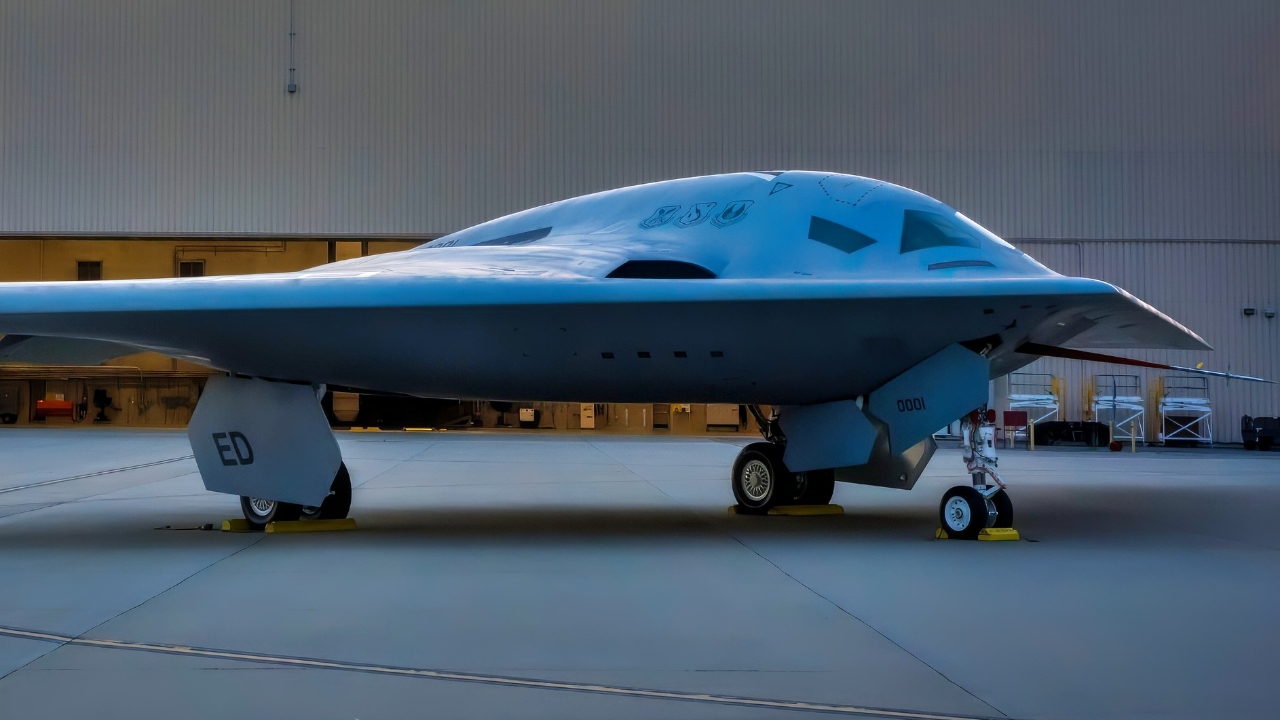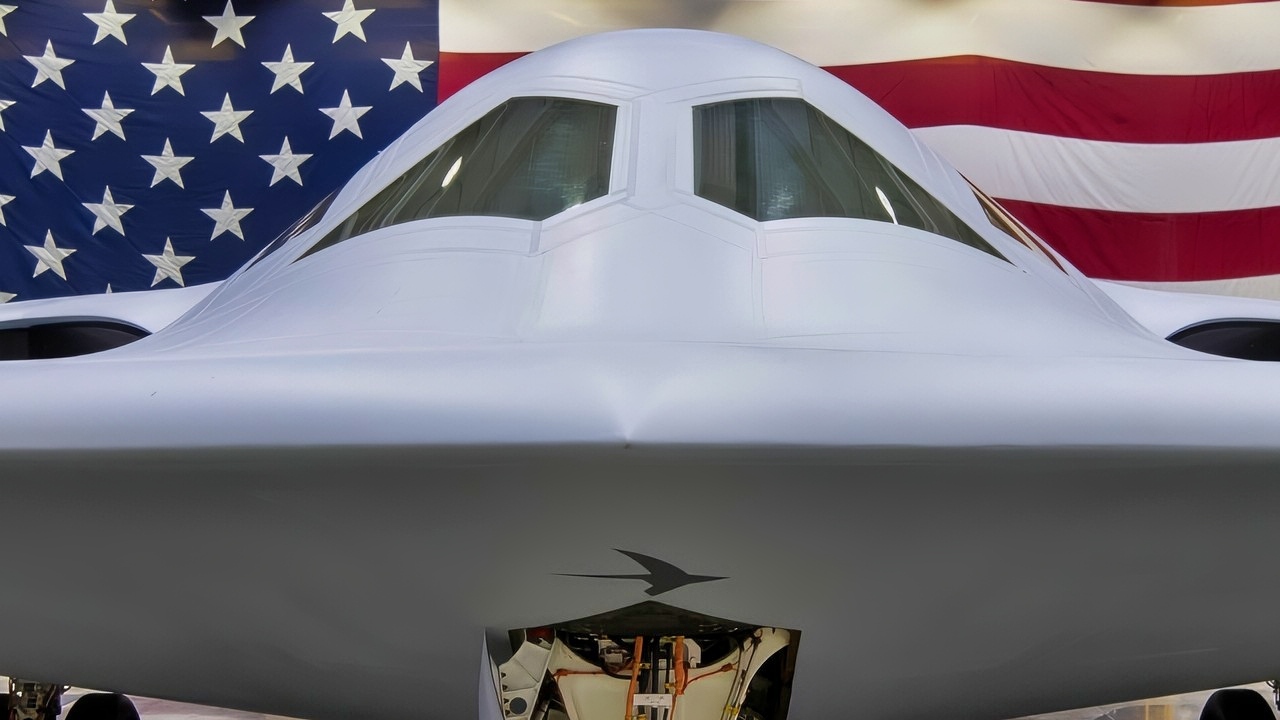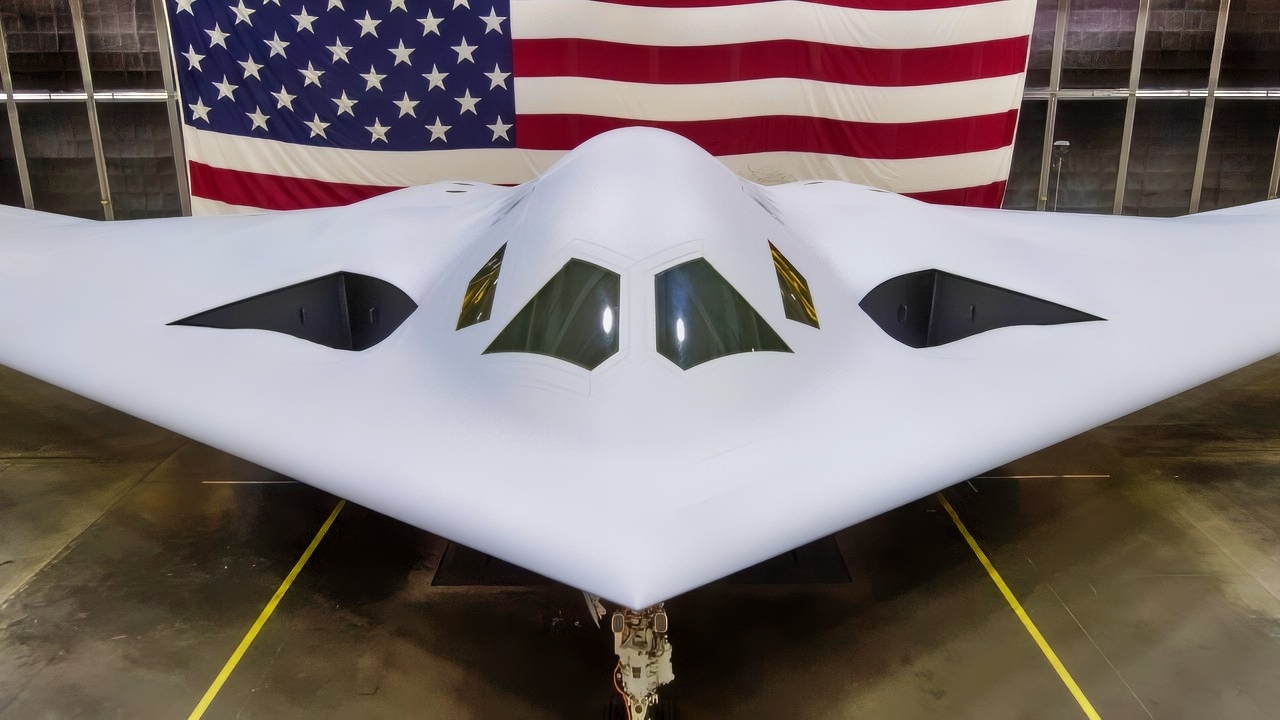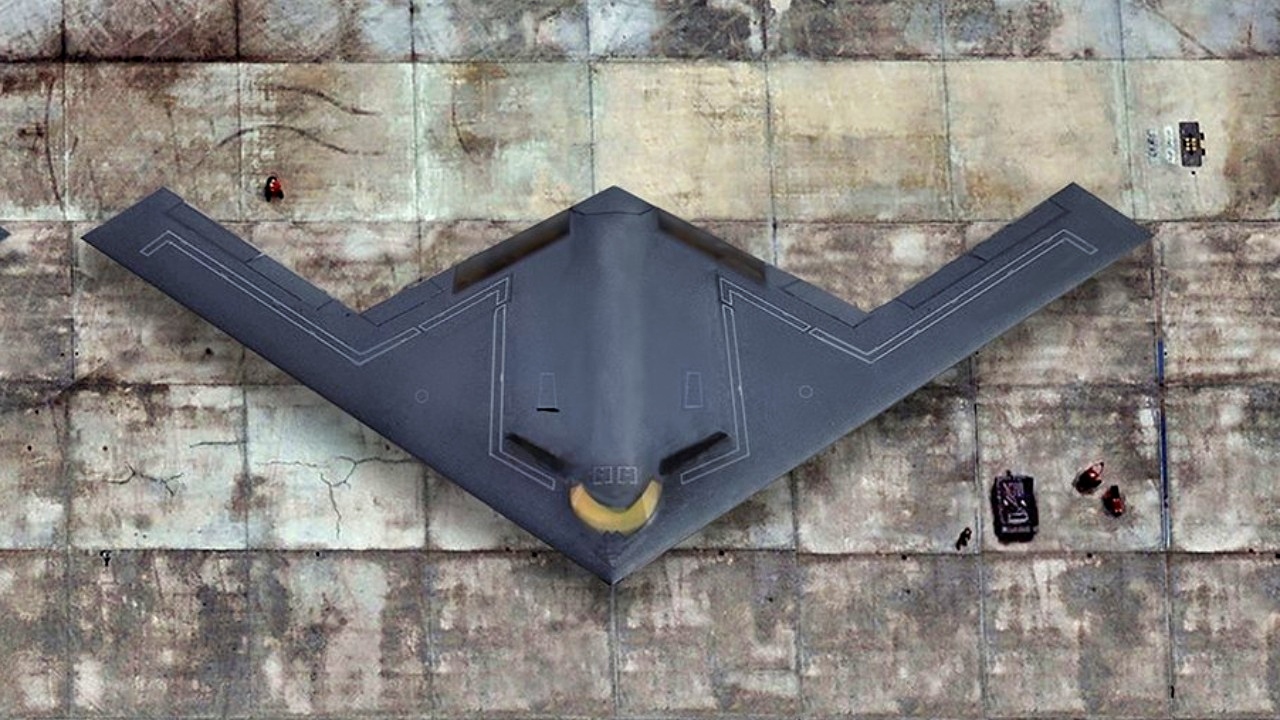Key Points and Summary – The B-21 Raider promises stealthy, long-range strike, ISR, and electronic warfare with open-architecture upgrades—exactly the mix for contested airspace.
-But the price is steep: roughly $700M per jet and an estimated $203B over 30 years for 100 aircraft.

B-21 Raider. Image Credit: Creative Commons.
-Early production write-offs and ramp-up pains add scrutiny.
-Supporters argue sustainment is designed to be simpler than the B-2’s, unit costs should drop with scale, and the fleet finally provides meaningful stealth bomber density.
-The risks: schedule slips, budget tradeoffs with NGAD and Navy F/A-XX, and industrial capacity.
-Smart oversight—lot-by-lot reviews and stable funding—will determine if the payoff matches the price.
Is the B-21 Raider Program Too Expensive?
Stealth airplanes have enjoyed a good year. The Israeli F-35I fifth-generation fighter blasted Iranian military and nuclear targets in June. The United States utilized B-2 Spirit stealth bombers to great effect during Operation Midnight Hammer. The mission punished Iranian nuclear infrastructure in a successful attack.
The B-21 Raider should be even better. The upcoming sixth-generation stealth bomber has the range and endurance needed to conduct long-distance attacks. It is a multi-use conventional and nuclear warplane that will improve the aerial leg of the U.S. nuclear triad. Stealth coatings have been improved for the Raider. The engine is top-notch. The bomber is designed to suppress enemy air defenses on the first day of battle to enable follow-on missile launches by B-52s and bunker-busting bombs from B-2s.

The B-21 Raider is designed with an open systems architecture, enabling rapid insertion of mature technologies and allowing the aircraft to be effective as threats evolve. The bomber was designed up front for supportability and maintainability-based upon decades of lessons learned and best practices from prior aircraft programs-to improve long-term affordability and outcomes in operations and sustainment. The B-21 first flight is anticipated to take place in calendar year 2023. (U.S. Air Force photo)

A B-21 Raider is unveiled at Northrop Grumman’s manufacturing facility on Air Force Plant 42 in Palmdale, California, Dec. 2, 2022. The B-21 will be a long-range, highly survivable, penetrating strike stealth bomber capable of delivering both conventional and nuclear munitions. (U.S. Air Force photo by Airman 1st Class Joshua M. Carroll)
Eye Watering Cost
But the B-21 comes with a high price tag. Each Raider might cost as much as $700 million, and the U.S. Air Force wants at least 100 B-21s—maybe even as many as 150 by the 2030s.
The B-21 is competing for scarce resources in the Department of Defense. The Air Force also wants the F-47 NGAD, which at one time was estimated to cost $300 million per plane. Then there is the U.S. Navy’s F/A-XX next-generation fighter jet program, which, when it is awarded, could be just as expensive as the F-47 NGAD.
The B-21 program as a whole could cost as much as $203 billion over the next 30 years—for 100 airplanes. This is no trivial sum. Indeed, it approaches the boundless expense of the F-35. More dollars still may be needed to keep it in the air for three decades.
There Are Many Reasons to Build It
The most important consideration, obviously, is whether the bomber will be worth the cost. The B-21 is supposed to be easier to maintain, and this could help improve readiness and, ultimately, cost-effectiveness. Thanks to its open architecture, it can be updated, and that will keep it flying for a long time. The airplane will communicate well with the existing bomber and fighter fleet and be interoperable with aircraft serving with NATO allies.
The B-21 will also better integrate sensors, radar, and fire control to provide the utmost in weapons accuracy. The airplane can deliver the latest stand-off missiles and precision-guided munitions, including hypersonic weapons.
The Raider’s advanced software will make the most of AI, and design methods for engineers will be based on digital architecture: Manufacturers will use augmented reality techniques during production.
The B-21 will be able to reach intercontinental targets at any time. Its range is magnificent, especially when refueled midair. The Raider can also conduct electronic warfare duties and collect intelligence, surveillance, and reconnaissance data.
The Politics Behind the B-21
This is all great—but cost projections could be a problem with all the new sixth-generation airplanes. U.S. President Donald Trump is a huge proponent of the F-47. The commander-in-chief has also called for more B-2s.
Senators such as Mike Rounds from South Dakota are big fans of the B-21, so the Raider has its champions in Congress. This will come in handy, as the B-21 will need to win ample investment for many years in the annual National Defense Authorization Act that assigns budget line items for military acquisition programs. Rounds must get his colleagues in the Senate and House of Representatives to back the B-21 with major investments in money and resources.
The Manufacturer Has Endured Early Cost Hits
Meanwhile, Northrop Grumman is already taking huge financial hits because of the B-21. In the first quarter of 2025, Northrop had to write off $477 million in losses. The defense behemoth underestimated the cost of tooling up a production line and getting advanced manufacturing techniques in place. Northrop wants to build the bombers at a faster pace to keep up with DoD and Air Force demands. The White House is watching closely to see how many B-21s can be built in the first three years of the program to better deter the Chinese and Russians.

The B-21 Raider was unveiled to the public at a ceremony December 2, 2022 in
Palmdale, Calif. Designed to operate in tomorrow’s high-end threat environment, the B-21 will play a critical role in ensuring America’s enduring airpower capability. (U.S. Air Force photo)

The B-21 Raider was unveiled to the public at a ceremony Dec. 2, 2022 in Palmdale, Calif. The B-21 will provide survivable, long-range, penetrating strike capabilities to deter aggression and strategic attacks against the United States, allies, and partners. (U.S. Air Force photo)
“While I’m disappointed with this financial impact, we continue to make solid progress on the [B-21] program, demonstrating performance objectives through tests, and we are progressing through the first two lots of production,” Northrop CEO Kathy Warden said. “With significant learning behind us, we are ready to deliver [to] the Air Force this highly capable strategic deterrent.”
I don’t expect Northrop to give up on the program and call “no joy.” The B-21 is the marquee project for the corporation, and its Palmdale, California plant is ready for the long haul.
This leaves the president’s national security team, Congress, and the DoD and Air Force responsible for making sure the B-21 program doesn’t fail to keep pace.
Defense Strategy Document Can Tell Us About the B-21’s Future
We will know more after the DoD releases the National Defense Strategy later this year. This critical document should spell out the advantages of conducting long-range conventional and nuclear strike with next-generation stealth airplanes.
The National Defense Strategy could reveal the number of B-21s the Air Force will order. The service might have to make do with only 100 airplanes because of their cost. This is fewer than some analysts and former Air Force generals are calling for.
I’m inclined to support an after action review when each lot is completed. These reports could be conducted by the Government Accountability Office to make sure the airplane is under budget and on-time. So far, no government watchdog has complained about the B-21, because the second airplane will be flying soon—which means delivery is on schedule.
Also, costs should come down per aircraft as Northrop produces more of them, thanks to manufacturing efficiencies and better economies of scale. Of course, this assumes that the federal government will not be shut down and that supply chains remain healthy.
Congress needs to conduct ample oversight of this expensive program. That means calling up acquisition officials, generals, and Northrop personnel for questioning in hearings. The after action reviews after each batch is built will offer clues about the success of the program. These people can attest to how the production expenses go up or down over time.
One hundred B-21s may be the correct number. This is way more than the 19 B-2s in service. The stealth capabilities of the new bomber will be first-rate and will allow for the retirement of the B-1B non-stealth bomber.
The B-21 program will outlast President Trump’s tenure, so a new occupant of the White House must be on board with keeping the program running. In 2026, midterm Congressional elections could also change the composition of House and Senate leadership. That’s why politicians such as Senator Rounds need to forge a bipartisan consensus around the B-21 program. This should be possible, given the urgency created by the Russians and Chinese working on their own sixth-generation bombers, and the need to improve the U.S. nuclear triad.
The airplane is looking good so far, but watch for reports by government watchdogs. The risk with a project as large as the B-21 is that it becomes a black hole where funding goes to die. That would be a huge disappointment.
About the Author: Brent M. Eastwood
Brent M. Eastwood, PhD is the author of Don’t Turn Your Back On the World: a Conservative Foreign Policy and Humans, Machines, and Data: Future Trends in Warfare plus two other books. Brent was the founder and CEO of a tech firm that predicted world events using artificial intelligence. He served as a legislative fellow for US Senator Tim Scott and advised the senator on defense and foreign policy issues. He has taught at American University, George Washington University, and George Mason University. Brent is a former US Army Infantry officer. He can be followed on X @BMEastwood.
More Military
Russia’s Submarine Fleet Summed Up Simply in 4 Words
The Air Force Sent A-10 Warthogs to China’s Doorstep
The Air Force’s B-2 Bomber Nightmare Has Arrived
The Navy Tried for 4 Weeks to Sink Their Own Aircraft Carrier










